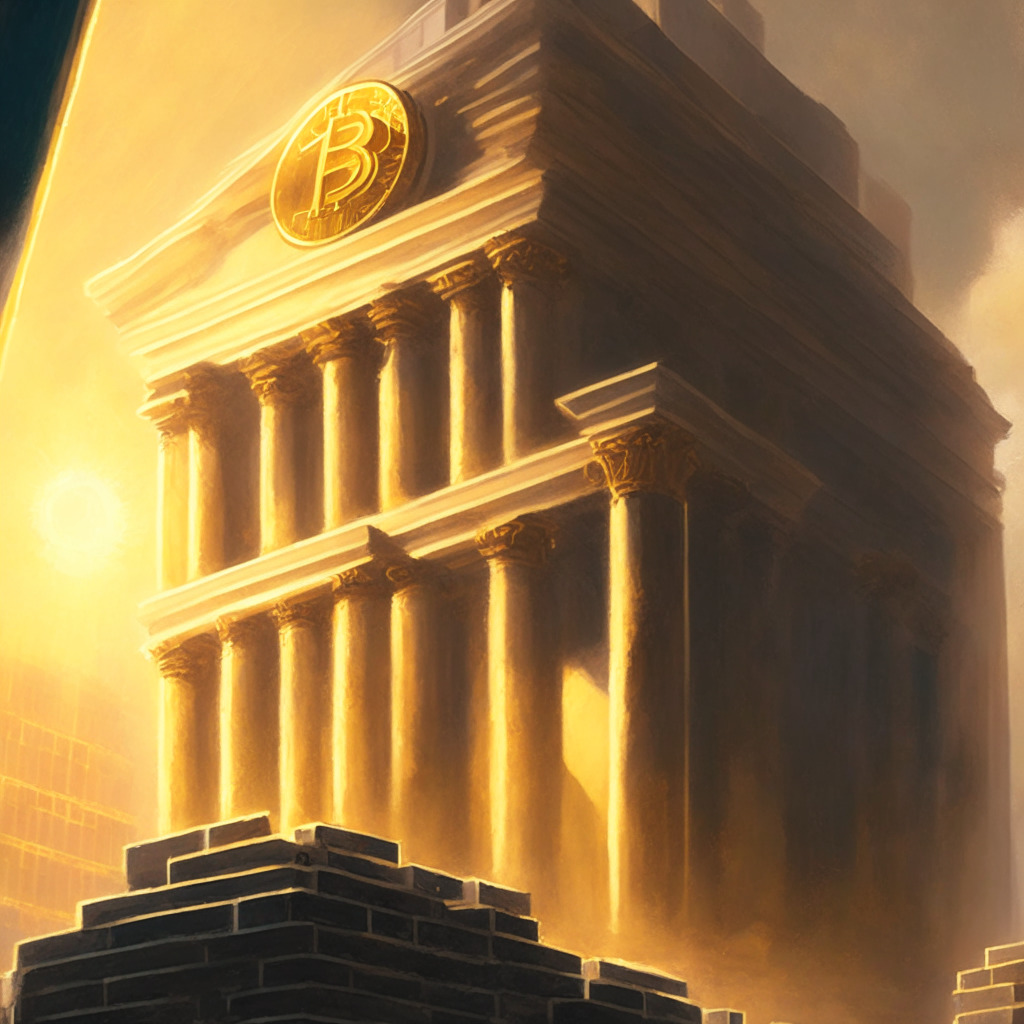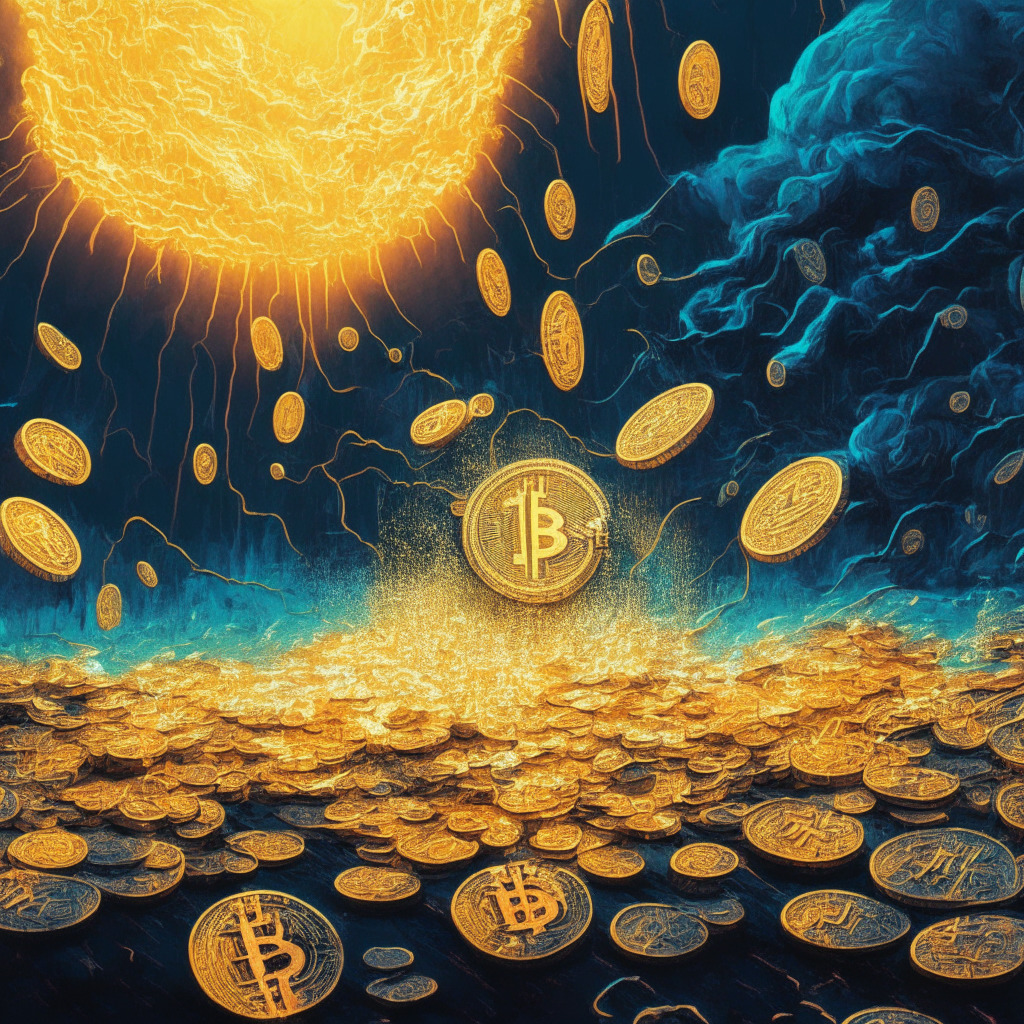Rune Christensen, co-founder of DeFi pioneer MakerDAO, foresees decentralized stablecoins dominating the crypto market while centralized ones may have the function of connectors with the traditional financial system. In the rapidly changing cryptocurrency landscape, regulation-friendly procedures and addressing centralization issues are critical in leveraging the potential of decentralized stablecoins.
Search Results for: Pear Protocol
Ethereum’s Proof-of-Stake Transition: A Year in Review and a Look into the Future
“Ethereum transitioned to the proof-of-stake system reducing power consumption by over 99% and making the network economically deflationary. However, anticipated price surge due to deflationary pressure hasn’t materialized swiftly. Liquid staking providers control significant amounts of staked Ether, raising potential centralization concerns.”
Navigating Bitcoin’s Metamorphosing Landscape amidst Economic Turmoil and Blockchain Evolution
“Jamie Coutts of Bloomberg suggests significant shifts in Bitcoin’s patterns amid economic tension. However, he reveals a potential silver lining due to Bitcoin’s adaptability and controlled inflation schedules. Additionally, blockchain technology shows promise with Matter Labs transferring their zkSync platform management to DappRadar, marking progress towards total decentralization.”
Unraveling the Regulatory and Ethical Quagmires: Navigating through the Crypto Landscape
A U.S. federal judge delayed a sentencing hearing for radio host Ian Freeman, who allegedly created an illegal Bitcoin exchange used by scammers. Meanwhile, the DeFi Education Fund contests a patent claim by tech company True Return Systems. Also, DigiFT’s dETH0924 provides up to 4% APR, boosting Ethereum’s PoS mechanism, while crypto infrastructure provider Qredo integrated Circle’s USDC stablecoin into its wallet.
Ethereum, Solana, and $BTCBSC: The Blockchain Battle Royale and the Tense Market Future
In this high-stakes world of blockchain technology, Ethereum competes with newcomers for dominance. Amid market volatility, Solana commands investor attention despite a bearish trend and uncertainties. Meanwhile, Binance Smart Chain secures admiration due to rapid transaction processing and low fees as Solana’s future hangs in balance. Despite market uncertainties, informed decisions and risk assessment are advised for navigating the digital asset realm.
Decoding DeFi: Navigating the Maze of US Regulations and the Promising Blockchain Future
“The US DeFi landscape hit an inflection point as the CFTC filed lawsuits against three companies, accusing them of offering financial products without proper registration. Amidst ambiguity, questions arise about DeFi’s future in the US, regulatory hurdles, and potential to revolutionize world finance. Undoubtedly, for DeFi to truly flourish, regulatory clarity and a willingness to embrace the evolving landscape is crucial.”
Noncustodial Liquidity Markets: Bridging Decentralized Finance with Seamless Lending & Borrowing
A Layer-2 network known as Base introduces noncustodial liquidity markets, changing the traditional ‘trust humans over algorithms’ dynamic. This innovation allows smart contracts to connect liquidity pools with borrowing strategies and promotes transparency. The Seamless Protocol enables streamlined undercollateralized borrowing, minimizing complexity and challenges usually associated with typical DeFi loans.
Navigating the Political Minefield of Central Bank Digital Currencies (CBDCs)
“Central bank digital currency (CBDC) enthusiasts face political opposition, despite the digital euro’s benefits such as EU-wide usability, unmatched privacy in digital payments, and independence from foreign payment providers. Opponents worry CBDCs could enable governmental overreach and surveillance, shifting discussions to the credibility of central banks. “
Navigating the Regulatory Conundrum: A Balanced Approach for DeFi Advancement
Commissioner Summer K. Mersinger raises concerns over CFTC’s focus on enforcement actions rather than engaging with the public and stakeholders when dealing with DeFi technologies. She suggests collaborative rulemaking, regulatory instruments and public engagement can be more effective in managing DeFi’s innovative scope and ensuring market participant safety.
The Silent Threat: How CBDCs Could Erode Your Financial Freedom
“Central bank digital currencies (CBDCs) offer governments easy access to data collection, surveillance, and asset seizure. Although promoted for benefits such as tax collection and combating financial crime, these programmable money forms may lead to increased transaction censorship and misuse from state control. Counteracting this potential erosion of liberty, cryptocurrencies offer a means to safeguard transactional rights.”
Deflecting the Blame: Uniswap Wins Case and Stirs Up Security Law Decisions in Crypto World
“A class action lawsuit against decentralized crypto exchange, Uniswap, was dismissed due to the unclear path for plaintiffs suing over alleged “scam tokens”. The judge argued that the issuers of these tokens were the culprits, not Uniswap. The case highlighted a legal quandary in identifying responsible parties amidst the anonymous, decentralized nature of crypto protocols, further clouding the jurisdiction and regulatory role of bodies like the SEC. The outcome implies that software creators could evade liability for misuse of their platforms.”
Rise of Crypto Staking Amidst Gloomy Blockchain Atmosphere: Can It Be the Future?
“Staking in the crypto world is showing resilience amidst a challenging year, with a 292% surge in total value locked (TVL) for liquid staking protocols. Ethereum staking is recovering, especially due to the ‘Merge’ event that transitioned Ethereum to live staking platform. It’s compared with the ‘on-chain equivalent of government bonds’, promising a safer alternative than DeFi lenders.”
The Paradoxical Rise of Liquid Staking: A Shift in DeFi Amid Regulatory Pressures and Yield Quests
“Liquid staking protocols, particularly Lido, have seen a massive rise recently despite an overall downturn in the DeFi industry. The popularity of liquid staking, driven by regulatory pressures and attractive yield returns, suggests a potential shift within the DeFi ecosystem.”
Crypto Exchanges and Bitcoin: A New Strategy or a Conflict of Interest?
Bitfinex, a renowned crypto exchange, is reportedly keeping Bitcoin on its balance sheet, potentially converting a portion of trading fees into the cryptocurrency. This strategic move indicates an endorsement of Bitcoin’s long-term value and shows strong belief in cryptocurrencies. However, concerns have been raised over potential market sway and fairness issues.
Decoding the Complex World of Blockchain through Solana’s Lens: Real-World Solutions and Challenges
Raj Gokal, co-founder of blockchain protocol Solana, is addressing blockchain scalability through decentralized physical infrastructure networks (DEPIN). He emphasizes well-thought-out factors to create a scalable blockchain system. Despite challenges in industries such as real estate, Solana is working towards stable and reliable Web3 infrastructure, critical for institutional adoption. As industry practices evolve, the blockchain future becomes increasingly tangible.
Riding the Storm: Blockchain Security Concerns & Resilience in the Wake of Recent Crypto Exploits
“The crypto-verse sees another wave of skeptics following an alleged ‘private key leak’ targeting Cryptocurrency Casino Stake, with $16 million reportedly withdrawn on the Ethereum network. An additional $25.6 million disappeared across Polygon and the Binance Smart Chain, indicating potential vulnerabilities within the crypto ecosystem.”
The DeFi Dilemma: Balancing Game-Changing Innovations with Rigorous Security
“Decentralized finance (DeFi) protocols are reshaping sectors but facing security complexities as shown by the Balancer protocol losing $900K due to a flagged vulnerability. Despite challenges, DeFi’s consistent innovation and adaptability demonstrate resilience. Yet, escalating security incidents suggest a need for more rigorous measures.”
OKX’s Bold Exploration into India’s Crypto Space Amid Array of Regulatory Hazards
Crypto exchange OKX is venturing into India’s web3 space despite regulatory uncertainties. The firm aims to engage and collaborate with India’s developer community, even as the authorities focus on stringent tax measures and anti-money laundering protocols for cryptocurrency. OKX’s strategy showcases an approach of cautious audacity towards the Indian market.
Post-FTX Turmoil: Phishing Ploys, SIM Swapping and Escalating Legal Costs
Following the FTX exchange closure, a new wave of phishing attacks is victimizing former FTX clients, leveraging registered email addresses. Coupled with a recent data breach including personal client information, in which crypto account passwords remained secure, FTX encourages clients to be vigilant against fraudulent activities. The ongoing situation underlines the potential risks, such as phishing and SIM swapping scams, in the crypto realm.
Unraveling the $6.5M Exit Scam: Dark Side of Decentralization or User Responsibility?
A recent event involving Magnate Finance draining users of approximately $6.5 million has raised concerns about the safety of decentralization. The anonymous founders disappeared, leading to suspicions of an exit scam. The incident resulted in a massive loss, equating to the total value locked in the protocol. Despite the perks of decentralization, its nefarious potential for scams and hacks is increasing, costing the crypto ecosystem an estimated $656 million in the first half of 2023 alone.
MakerDAO’s Investment Risk: Parsing the Pros and Cons of Blockchain Credit Platforms
An upcoming default on tokenized loans threatens blockchain-based platform, MakerDAO’s $1.84 million investment. A borrower from the credit pool, currently in a court dispute, is on the edge of liquidation, raising questions about the robustness of blockchain credit platforms.
1inch Joins Coinbase’s Ethereum Layer 2: The Progress, Promise and Pitfalls of Base Network
Decentralized exchange aggregator 1inch has partnered with Coinbase’s Ethereum Layer 2 network Base, aiming to leverage liquidity from 15 functioning decentralized exchanges. The agreement introduces 1inch’s limit order protocol, contrasting from standard instant price conversions, and integrating Base within robust Layer 2 networks like Optimism, Arbitrum, and zkSync Era. Despite impressive growth and transaction rates, Base faces challenges with a high proportion of meme coin activity, suggesting potential volatility.
China’s Crypto Crackdown: A Tale of State Control vs Private Blockchain Ventures
China’s escalating efforts to eliminate private cryptocurrency activities are causing deep concern among blockchain firms. Measures taken by authorities include offering bounties for information leading to arrests and asset seizures of private crypto ventures – sparking fear amongst operators and sparking a mass exodus among Chinese Web3 founders. At the same time, state-sanctioned blockchain initiatives are flourishing, underscoring a dualistic approach by the Chinese authorities.
Coinbase, Blockchain and the Tightrope Walk between Control and Decentralization
Coinbase recently launched “Base,” its own blockchain network, alongside its strategic framework, “Base Neutrality Principles”. The principles are designed to navigate the nuances of running a proprietary blockchain without compromising its decentralised nature. They include non-interference with crypto assets, transaction sequences, and ensures privacy and unhindered withdrawals for Base users.
Bitcoin’s Rise Amid Market Rally: Balancing Crypto Rewards and Risks
“Bitcoin sees a substantial boost, correlating with traditional stock market rallies. Despite this, the bankruptcy of crypto exchange FTX serves as a reminder of market volatility and risk. Meanwhile, the DeFi sector shows bullish trends, offering traders legitimate and potentially highly profitable alternatives.”
Decoding Ethereum Layer-2 Networks: Coinbase’s Pivot, Shibarium’s Revamp, and Solana’s Resurgence
The blockchain realm witnesses escalating discussions about secondary “layer-2” networks built atop Ethereum using “zero-knowledge” cryptography. Meanwhile, Coinbase pioneers blockchain education by operating its own blockchain, Shibarium aims to resolve network issues, and Solana recovers after significant setbacks while Terra falls victim to hackers.
Solana’s Bullish Run: Potential for 10x or Regulatory Roadblocks?
The Solana (SOL) cryptocurrency is showing strong momentum, driven partly by the integration of Solana Pay with Shopify Inc. However, its future course is uncertain, contingent on broader market trends and potential US regulatory changes. Despite this, Solana’s potential for significant upside expansion as a decentralized application platform remains promising.
EU’s Data Act: A Double-Edged Sword for Blockchain and DeFi?
The European Union’s Data Act introduces regulations that could reshape the digital landscape, causing concern among blockchain experts due to provisions like a “kill switch” for smart contracts. This could have unforeseen consequences due to a lack of clarity on safe termination conditions, creating uncertainty in the world of blockchain and decentralized finance (DeFi).
Atomic Wallet Hack 2023: Unravelling the Crypto Security Dilemma Amid Rising Concerns
“The Atomic Wallet incident resulted in losses of a considerable $100 million, with recent accusations implying a Ukrainian group’s involvement. The breach situation is vague, with potential causes ranging from malware, an internal breach, to a man-in-the-middle attack. This highlights the crypto industry’s insecurity and the need for comprehensive security measures and regulation.”
North Korean Hacks vs. Blockchain Transparency: The Duel That Shapes Crypto Security
The FBI has put six Bitcoin wallets, affiliated with North Korea’s Lazarus Group, on its radar, highlighting their potential possession of around $40 million. The Group’s success in crypto exploits is counterbalanced by blockchain’s public-ledger technology which makes laundering assets increasingly difficult due to traceable and freezeable transactions.
Binance’s BNB Token Faces Plunge: Can Presale Strategy Cushion The Blow?
“BNB, the digital token of Binance Smart Chain, slumped to its lowest since July 2022, due to suspected loan liquidations on the Venus protocol. Amid controversies and ongoing legal proceedings against Binance, experts advise crypto enthusiasts to diversify investments in the volatile market.”
Bitget Imposes Stricter KYC: Enhancing Security or Limiting Genuine Crypto Enthusiasts?
“Singapore-based cryptocurrency exchange, Bitget plans to implement stricter know-your-customer (KYC) protocols from September 1 to quell perceived leniency and potential financial crimes. New users will need to pass level 1 KYC verification, including identity and facial confirmation, otherwise trading rights may be lost.”































